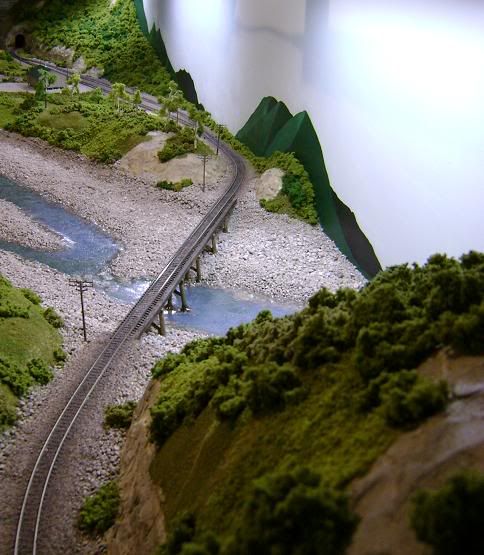My previous layout, which I built in 2007, was a roundy-roundy arrangement with a scenic area on the front and a staging yard at the back. It was based somewhat roughly on the West Coast side of the Midland Line. It was fairly successful, and I learnt a great deal while building it, but ultimately I felt it was flawed and lacked further potential. I was also having difficulty at the time working out where I was going to get rolling stock from, and my enthusiasm for the hobby diminished rather quickly after a huge pile of work landed on my desk. The layout was eventually sold on Trademe, but I figured that it had served its purpose as a bit of fun and a learning experience.

I had considered building another circuit layout, but I was ultimately unsatisfied with the realism and scope a manageable layout could offer, so these plans came to nothing. After seeing the modular layouts at the Christchurch show, however, I became convinced that a modular layout was the way to go. Here was something I could make a start on, and its modularity meant that the layout could develop and grow over time as my enthusiasm dictated.
I had been lurking at NZ120.ORG, and so I posted a thread about the possibility of forming a modular group, which quickly led to a long discussion about modular standards (that I will not repeat here). After a lot of discussion, a rough Free-mo standard was developed. It can be found here.
I was ready to start building. After a lot of thought and revised plans, I decided to build a freelance module based on a South Island location. I think that Free-mo is suited to freelance subjects, because ultimately the modules will be joined up in ad hoc and unrealistic arrangements anyway, and what is needed in a Free-mo module is something that is going to make a functional contribution to a layout. I haven't ruled out building something more prototypical in the future however. Thus the idea with this module was to build a yard that would be functional in a Free-mo layout, allowing for the staging of trains. The design would have a couple of passing loops, sidings, and a head shunt. I jotted down my rough plans on a piece of paper, and then calculated a list of materials.
Actually, this is a gross simplification of how it all came about, but I'll spare you the interminable sequence of decisions I made and latter revised!
Next post: buying supplies and making a start on the modules.
A great start Earwicker ! Keep the updates coming.
ReplyDelete